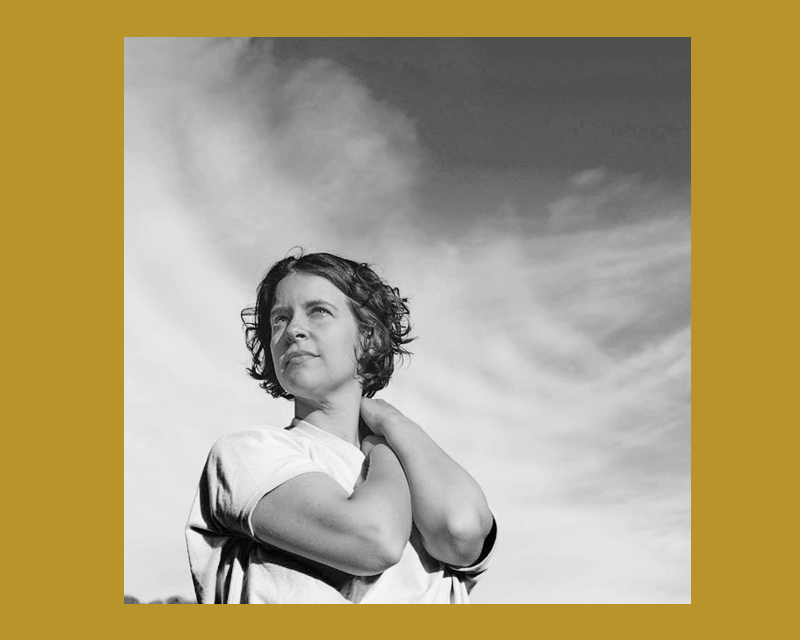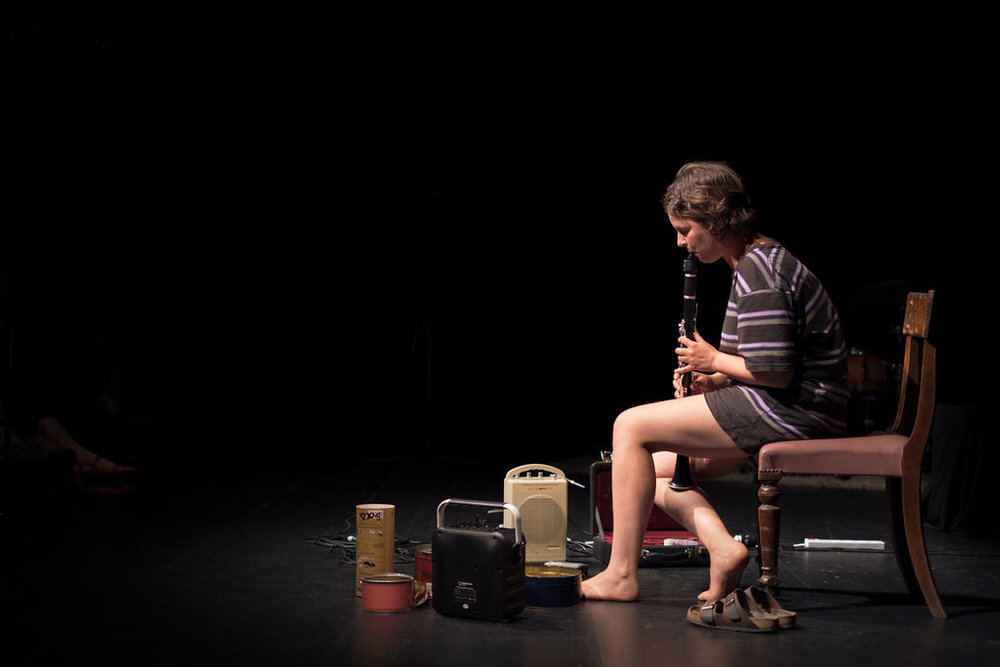
Creative Profile: Laura Altman
UNDERSTANDING THE WORLD OF LAURA ALTMAN

CREDITS lead image: Miki Sakai insert image: Josh Wells Photography Interview: Priyanka Smithfield
Laura Altman is based in Sydney on Gadigal Country, where she has woven her way through the improvised, exploratory and folk music scenes with her intuitive clarinet playing, free improvising and compositions.
She is a long-standing member of many varies ensembles, including improvising collective Splinter Orchestra, internationally acclaimed trio Great Waitress, style-free exponents Prophets and folk-chamber ensemble Chaika. In recent years Laura has ventured into a solo improvisation practice that involves her unique approach to the clarinet underpinned by a curiosity with resonance and feedback. She has also been writing songs with voice and guitar that are beginning to find their way into the world. Laura co-hosts Listening Space on Eastside Radio 89.7, helps run emus.space, an online exploratory music directory and newsletter, and occasionally puts on gigs. She sits down with Priyanka Smithfield to discuss her practice in defined and undefined terms.You are a clarinetist, composer, custodian of E M U S. Given that each has a skill set that is unique to itself how does this juggling shift the way you approach music making? Do you think about it?
I don’t really think about it much - but it’s interesting to think about now! Hmm. I guess the path I’ve found myself on, as a creative musician, is multifaceted. Yes, each of those things is unique, but they’re also hugely interwoven, interrelated. Sometimes it’s appropriate to separate them out – and actually it’s really great when I get to hone in on one part of my practice, for example focusing on playing the role of a clarinetist, or having fuller creative agency through composing, etc – but more and more I’m seeing how they blend. And, in fact, I find that each of these facets often support, depend upon, and even necessitate the others. I realise how my approach to clarinet playing informs my compositions; how my experiences improvising help me curate and organise events; how reaching new audiences and witnessing their experiences feed and inspire my creative sound practice, etc. Doing emus (the calendar and newsletter) has also led me to doing a radio show ‘Listening Space’ on Eastside Radio, which is a lovely way to listen to and share others’ music, and in turn this invites me to reflect on my own practice. It all feeds in.What initially drew you to experimental music, and what keeps you engaged with it?
I think I’ve always been curious about sound, about sonic phenomena. I’ve always loved harmony – in a traditional sense, but in a broader sense too: how two or more sounds sit together, coexist, excite each other, blend into each other, create new bi-products, bounce off each other, veil and reveal each other, move each other. I can remember several experiences of music as I knew it being, kind of … exploded or expanded, and feeding this curiosity about new sound worlds. From really simple things like … ‘discovering’ chord extensions as a school student – where simple triads could have other notes added to them to make them shimmer with new colours… to hearing the harmolodics of Ornette Coleman, learning about sine tones and hearing Alvin Lucier’s work for clarinet and oscillator, to John Cage’s radio piece, and Morton Feldman’s exquisite 6 hour second string quartet. But the THE NOW now and Splinter Orchestra were my first real insight into what I might now describe as experimental music here in Sydney.
Could you walk us through your creative process? How do you typically start a new piece or project? How do you navigate the balance between structure and spontaneity in your work?
I think I’m always waiting for ‘feedback’. For example, when improvising, I play a sound and then hear how it resonates in a space/time/with others (or with me). Structural choices here might simply include where I set up in a space, or which instrument I choose to play. It could be the length of the set. I tend to invite chaos / unpredictability through indeterminate elements like mystery cassette tapes or feedback, but also each environment I play in has an effect on what/how I play and listen. From there, I start a process of sculpting, listening, offering, receiving. Feedback is important though. From space. From audiences. From my own ears if I’m composing. Recording and listening back. I play with actual feedback in my solo set up (i.e microphones and speakers) which literally gives me something back to play with – something that isn’t automated. That is interactive. That listens to me and responds to me, and also registers particulars of the room, other objects and the proximity of body. I guess in both improvising and composing for me there’s a tension, maybe a little dance, between some kind of structure and spontaneity that I’m constantly playing with. How do you see your role as an experimental musician in contributing to the broader cultural dialogue? I think it’s good to keep things weird, honest, inspired, exploratory. To create opportunities for people to listen, hear and feel things that they might not be able to access through other cultural experiences. To counter cookie-cutter, commercial cultural norms - for balance! And of course to support people to express themselves, their experiences and ideas and personal poetry, through a sound-centric artform. Visit Laura AltmanCREDITS lead image: Miki Sakai insert image: Josh Wells Photography Interview: Priyanka Smithfield
